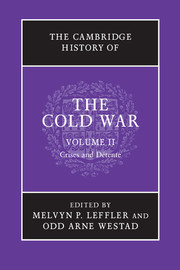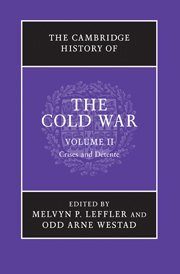NSC 68 and the Political Economy of the Early Cold War
NSC 68 and the Political Economy of the Early Cold War reexamines the origins and implementation of NSC 68, the massive rearmament program that the United States embarked upon beginning in the summer of 1950. Curt Cardwell reinterprets the origins of NSC 68 to demonstrate that the aim of the program was less about containing communism than ensuring the survival of the nascent postwar global economy, upon which rested postwar U.S. prosperity. The book challenges most studies on NSC 68 as a document of geostrategy, and argues, instead, that it is more correctly understood as a document rooted in concerns for the U.S. domestic political economy.
- The first comprehensive analysis of the origins of NSC 68
- Demonstrates the role that US Cold War military spending played in fostering globalization
- Challenges Cold War orthodoxy, particularly its triumphalist variant, in the wake of the Cold War's end
Reviews & endorsements
“Curt Cardwell has offered us an economic analysis of one of the more important documents in modern U.S. history, NSC 68, which is sure to change our understanding of the imperatives that drove American leaders in the early Cold War years, especially the ‘dollar gap’ and the need to stimulate spending. It will provide an invaluable source for a revisionist/materialist interpretation of the Cold War.” – Robert Buzzanco, author of Masters of War and Vietnam and the Transformation of American Life
“Curt Cardwell demonstrates that political economy is not a lost art. In this meticulously researched and comprehensive account of the place of NSC 68 in the early Cold War, Cardwell lays out the economic imperatives facing the Truman administration and the role rearmament played in postwar recovery. The book is a persuasively argued revision of the standard story told with verve and energy.” – Marilyn B. Young, Professor, Department of History, New York University
“Curt Cardwell has written an important, perceptive, and analytically powerful book that adds a new dimension to existing understanding of the transformation of the United States after World War II into a national security state. His impressive research substantiates a provocative main thesis that U.S. leaders prosecuted the Cold War more to preserve a liberal economic world order than to contain the Soviet Union. Cardwell exposes the previously overlooked centrality of the dollar gap as a motivating factor guiding postwar U.S. policy, providing an important corrective, especially to existing accounts that exaggerate the success of the Marshall Plan.” – James I. Matray, California State University, Chico
“Today’s overwhelming U.S. military budget had its roots in 1949–1950, whereas the famous (if long-secret) NSC 68 strategy paper of 1950 shaped American plans to the end of the Cold War – and after. Curt Cardwell has written the definitive study of these crucial pivots in American history by giving this book two special qualities: a mastery of the records revealing what triggered these U.S. policies, and a beautifully done dissection of the all-important economic causes that shaped – and misshaped – this historic turn and, consequently, the more than 60 years that have followed.” – Walter LaFeber, Cornell University, author of America, Russia, and the Cold War, 1945–2006, and The American Age: U.S. Foreign Relations at Home and Abroad since 1750
Cardwell’s book argues that NSC 68 grew out of US concerns not with a growing Soviet menace but with the prospect that Western Europe would face a serious payments deficit with the dollar area when the Marshall Plan ended in 1952." -John L. Harper, Survival
Product details
June 2011Hardback
9780521197304
310 pages
235 × 163 × 26 mm
0.56kg
Available
Table of Contents
- Introduction
- 1. NSC 68 and the problem of origins
- 2. Multilateralism, the Soviet threat, and the origins of the Cold War
- 3. Multilateralism, the dollar gap, and the origins of the Cold War
- 4. The dollar gap and its discontents
- 5. The British sterling-dollar crisis of 1949–50
- 6. The origins and development of NSC 68
- 7. The political economy of rearmament
- Conclusion.






